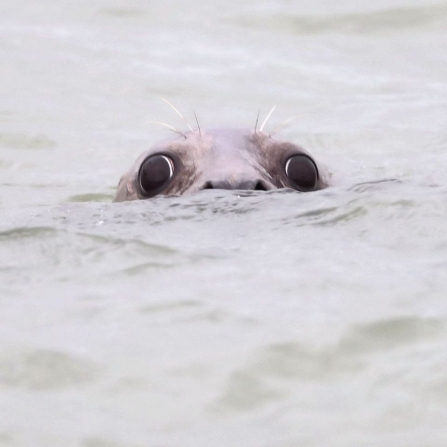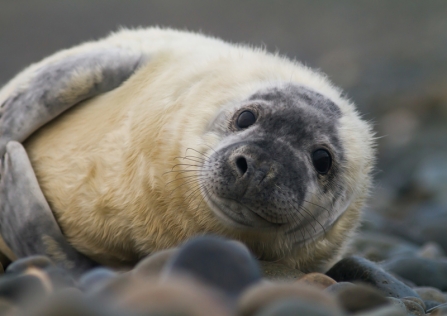You can see them all year round along the British coastline. You can sometimes even spot Common seals in rivers as they have been known to swim quite far upstream in search of food.
Despite their name, Common seals are actually less common than Grey Seals, the other seal species found in the UK. They are protected in Britain under the Conservation of Seals Act and are also classified as a Priority species.
Whilst it can be difficult to distinguish our two UK seal species when they’re in the water, there are a few tell-tell signs which can help. Common seals are smaller in size, they have a shorter head and snout, a rounder face and V-shaped nostrils.



